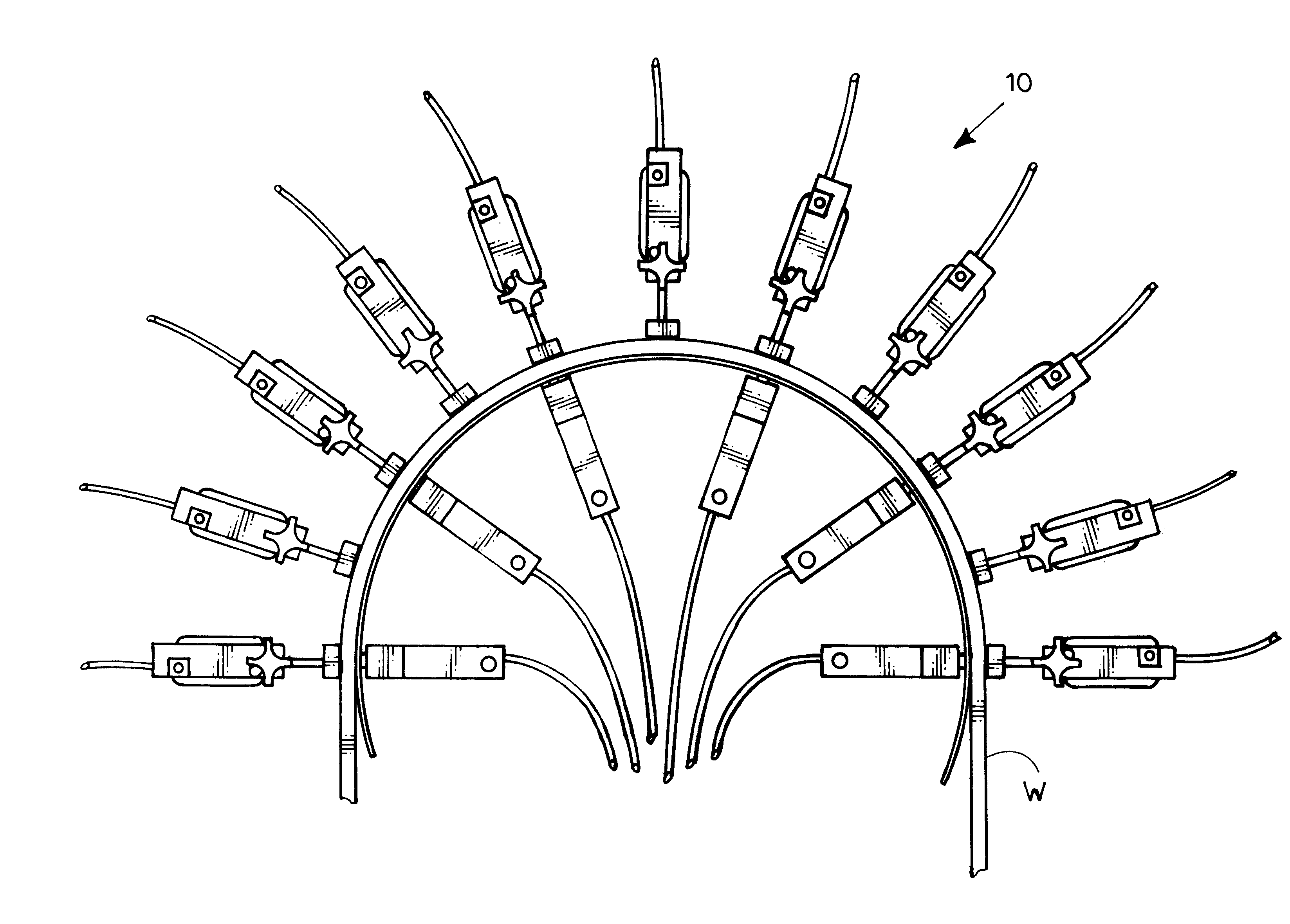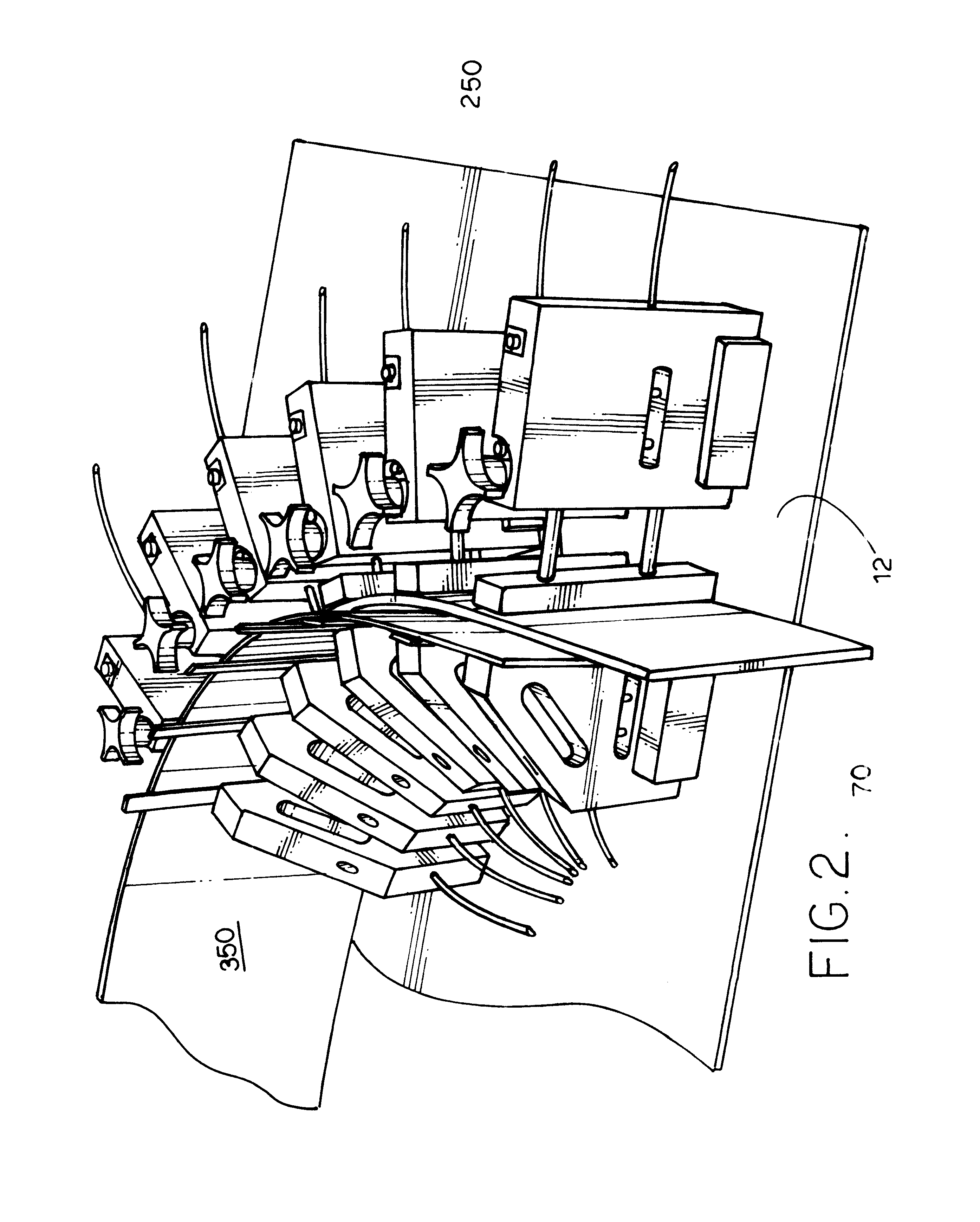Unit and method for bending wood
a technology of bending wood and unit, applied in the field of unit and a method for bending wood, can solve the problems of difficult to bend or shape wood, difficult to bend strong wood, difficult to operate, etc., and achieve the effect of easy and quick set up, and quick and easy movement and adjustment of blocks
- Summary
- Abstract
- Description
- Claims
- Application Information
AI Technical Summary
Benefits of technology
Problems solved by technology
Method used
Image
Examples
Embodiment Construction
Other objects, features and advantages of the invention will become apparent from a consideration of the following detailed description and the accompanying drawings.
The machine and method embodying the teaching of the present invention quickly and easily defines a continuous and uninterrupted control curve and then permits quick and easy set up of wood contacting elements along that control curve whereby any desired degree of accuracy can be easily achieved even by a non-skilled worker. Compound and complex wood curves can be easily achieved, and the equipment is not subject to damage by debris and can be easily cleaned if debris is present. The wood contacting elements are held in place by electromagnets so they are easily and quickly moved into desired positions, and then can be quickly activated to be securely held in place even if the wood being bent is thick and difficult to bend.
Referring to the figures, the machine or unit embodying the present invention will be described fi...
PUM
| Property | Measurement | Unit |
|---|---|---|
| shapes | aaaaa | aaaaa |
| width | aaaaa | aaaaa |
| length | aaaaa | aaaaa |
Abstract
Description
Claims
Application Information
 Login to View More
Login to View More - R&D
- Intellectual Property
- Life Sciences
- Materials
- Tech Scout
- Unparalleled Data Quality
- Higher Quality Content
- 60% Fewer Hallucinations
Browse by: Latest US Patents, China's latest patents, Technical Efficacy Thesaurus, Application Domain, Technology Topic, Popular Technical Reports.
© 2025 PatSnap. All rights reserved.Legal|Privacy policy|Modern Slavery Act Transparency Statement|Sitemap|About US| Contact US: help@patsnap.com



